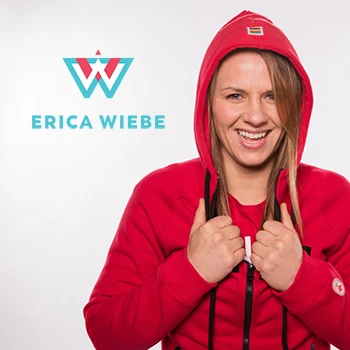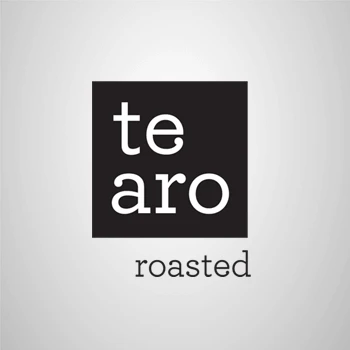What exactly is competitive brand analysis and why do we need it?
Competitive brand analysis reveals how your brand compares to competitors across the entire Experience Thinking framework - examining brand positioning, content strategy, product experiences, and service delivery. This analysis ensures your branding strategy connects emotionally with audiences while standing out from those also demanding attention from your market.
Tip: Focus on analyzing competitors who compete for the same customer decision moments rather than just similar product categories.
How does competitive analysis fit into the Experience Thinking framework?
Competitive analysis examines the competitive landscape across all four Experience Thinking quadrants - brand, content, product, and service experiences. Understanding how competitors perform in each area reveals gaps and opportunities where you can create superior connected experiences that differentiate your organization in meaningful ways.
Tip: Map competitors across all four quadrants to identify where they're strong and where they have weaknesses you can exploit.
What makes competitive brand analysis different from product competitive analysis?
While product analysis focuses on features and functionality, brand competitive analysis examines emotional connections, positioning, personality, and how competitors express their character across touchpoints. We analyze how competitors build loyalty and advocacy through their entire experience ecosystem, not just product capabilities.
Tip: Pay attention to how competitors make customers feel, not just what they offer - emotional differentiation often matters more than feature differences.
Why is understanding the competitive brand landscape crucial for our strategy?
The competitive brand landscape determines what positioning territories are available, which emotional connections are being claimed, and where white space exists for differentiation. Understanding this landscape prevents you from blending in and helps identify opportunities to own distinctive brand territory that competitors haven't claimed.
Tip: Look for positioning gaps that align with your organization's authentic strengths rather than just copying what seems to work for others.
How do you identify the right competitors to analyze?
We identify direct competitors who target the same audience, indirect competitors who solve similar problems differently, and aspirational competitors from other industries who excel at brand experience. This multi-layered approach reveals competitive threats and inspiration sources you might not consider otherwise.
Tip: Include competitors your customers mention when deciding between options, even if they're not obvious category competitors.
What aspects of competitive brands do you analyze?
We examine brand positioning, personality expression, messaging strategy, visual identity, content approach, product experience design, service delivery, and customer lifecycle management. This holistic analysis reveals how competitors create their brand experience across all touchpoints in the Experience Thinking framework.
Tip: Focus extra attention on analyzing competitor touchpoints where your target customers spend the most time making decisions.
How does competitive analysis reveal brand differentiation opportunities?
By mapping how competitors position themselves across brand attributes, personality traits, and value propositions, we identify overcrowded territories and underserved positioning opportunities. This reveals where you can establish distinctive brand territory that resonates with your audience without direct competition.
Tip: Look for positioning territories that competitors avoid but that align with emerging customer needs or market trends.
What research methods do you use for competitive brand analysis?
We combine digital ethnography, touchpoint audits, customer journey analysis, content analysis, and stakeholder interviews. This mixed-method approach captures both observable competitive behaviors and the underlying strategic thinking behind competitor brand decisions across the entire experience ecosystem.
Tip: Include analysis of competitor customer feedback and reviews to understand how their brand experience actually performs versus their intended positioning.
How do you analyze competitor brand experiences across different touchpoints?
We conduct comprehensive touchpoint audits examining how competitors express their brand through websites, social media, customer service, product interactions, and physical spaces. This reveals consistency gaps and identifies where competitors excel or struggle with brand expression.
Tip: Pay special attention to touchpoints where customers compare options side-by-side, as these moments heavily influence brand perception.
What's your approach to analyzing competitor content strategies?
We examine competitor content across all channels, analyzing messaging themes, tone of voice, content types, distribution strategies, and audience engagement patterns. This reveals how competitors use content to express brand personality and build relationships with shared audiences.
Tip: Analyze the topics competitors avoid or handle poorly - these often represent content differentiation opportunities for your brand.
How do you assess competitor product and service experiences?
We analyze competitor product interfaces, user experiences, service processes, and customer support approaches to understand how they deliver on brand promises through actual experiences. This reveals gaps between brand positioning and experience delivery that create opportunity or vulnerability.
Tip: Test competitor experiences as a customer would to understand the reality of their brand promise delivery, not just their marketing claims.
What tools and frameworks do you use for competitive analysis?
We use Experience Thinking methodology, brand positioning maps, competitive landscape matrices, touchpoint comparison frameworks, and customer journey analysis tools. These frameworks ensure systematic analysis that reveals both obvious and subtle competitive advantages and weaknesses.
Tip: Use consistent evaluation criteria across all competitors to ensure fair comparison and identify relative strengths and weaknesses accurately.
How do you analyze competitor pricing and value proposition strategies?
We examine how competitors position value, structure pricing, and communicate benefits across the Experience Thinking framework. This reveals how pricing connects to brand positioning and identifies opportunities to compete on value rather than just price points.
Tip: Focus on understanding the complete value story competitors tell, not just their pricing structure, to identify differentiation opportunities.
How do you track competitor brand evolution over time?
We establish baseline analysis and monitoring systems to track competitor brand changes, messaging shifts, and strategic pivots. Understanding how competitors evolve helps predict future moves and identify opportunities created by their strategic changes.
Tip: Set up Google Alerts and social monitoring for key competitors to catch brand changes early and respond quickly to market shifts.
What strategic insights does competitive brand analysis typically reveal?
Analysis reveals positioning white space, messaging opportunities, experience gaps, and competitive vulnerabilities. We identify where competitors are vulnerable to disruption, which brand territories are overcrowded, and how to position your brand for sustainable competitive advantage across the Experience Thinking framework.
Tip: Focus on insights that reveal sustainable competitive advantages rather than temporary gaps that competitors can quickly close.
How do you identify competitive brand vulnerabilities?
We analyze gaps between competitor brand promises and actual delivery, inconsistencies across touchpoints, and areas where they struggle to meet customer expectations. These vulnerabilities reveal opportunities to capture market share through superior brand experience execution.
Tip: Look for competitors whose growth has outpaced their ability to deliver consistent brand experiences - these create the biggest vulnerability opportunities.
What does competitive analysis reveal about market positioning opportunities?
Analysis maps the competitive positioning landscape to identify overcrowded territories, underserved segments, and emerging positioning opportunities. This reveals where your brand can establish distinctive territory that resonates with target audiences without direct competitive conflict.
Tip: Look for positioning opportunities that align with customer needs competitors are ignoring rather than trying to compete directly in crowded territories.
How does competitive analysis inform brand differentiation strategy?
By understanding how competitors position themselves across brand attributes and Experience Thinking areas, we identify opportunities to differentiate through unique brand personality, superior experience delivery, or innovative positioning that creates new competitive territory.
Tip: Focus differentiation on areas where you have authentic organizational strengths rather than trying to copy competitor approaches.
What competitive insights are most valuable for tech companies?
Tech competitive analysis reveals how competitors balance innovation messaging with trust-building, how they explain complex solutions simply, and where they struggle with human connection. This is crucial for tech companies needing to demonstrate expertise while remaining approachable to decision-makers.
Tip: Analyze how competitors communicate with non-technical decision-makers who influence purchasing but may not understand technical differentiators.
How do you identify emerging competitive threats?
We monitor adjacent industries, new entrants, and changing customer behaviors to identify potential competitive threats before they become obvious. This includes analyzing how digital transformation and market changes create new competitive dynamics in your space.
Tip: Pay attention to companies serving your customers' adjacent needs - they often expand into your core market with different brand approaches.
What role does competitive analysis play in innovation strategy?
Competitive analysis reveals innovation gaps and opportunities where new approaches could disrupt existing competitive dynamics. Understanding competitor innovation patterns helps identify where breakthrough thinking could create sustainable competitive advantage across the Experience Thinking framework.
Tip: Look for areas where all competitors use similar approaches - these represent the biggest opportunities for innovative differentiation.
How do you help implement competitive analysis insights?
We provide strategic recommendations, positioning frameworks, and implementation roadmaps that translate competitive insights into specific actions. Our approach connects analysis findings to Experience Thinking implementation across brand, content, product, and service experiences for competitive advantage.
Tip: Prioritize implementing insights that address your biggest competitive vulnerabilities first, then focus on differentiation opportunities.
How does competitive analysis inform brand positioning strategy?
Analysis reveals available positioning territories and helps craft positioning that differentiates from competitors while resonating with target audiences. We help position your brand in white space that competitors haven't claimed but that appeals to your desired market segments.
Tip: Test your proposed positioning with target customers to ensure it differentiates meaningfully from competitors in their minds, not just on paper.
What's your approach to translating competitive insights into messaging strategy?
We help develop messaging that highlights your advantages while avoiding direct comparison battles. Competitive insights inform how to communicate value propositions that resonate with audiences seeking alternatives to current competitive offerings.
Tip: Focus messaging on the outcomes customers want rather than just features competitors lack - this creates stronger emotional connection.
How does competitive analysis influence content strategy across Experience Thinking areas?
Competitive insights guide content strategy by identifying topics competitors neglect, content gaps in the market, and opportunities to provide superior value through content. This applies across all Experience Thinking touchpoints where content shapes brand perception.
Tip: Create content that helps customers make better decisions about their challenges rather than just promoting your solution over competitors.
How do competitive insights guide product experience design?
Analysis reveals where competitors struggle with user experience, feature gaps, and opportunities to create superior product experiences. This guides product strategy to address competitor weaknesses while building on your unique strengths through better experience design.
Tip: Focus on experience improvements that are difficult for competitors to replicate quickly rather than just feature additions they can copy.
What's the connection between competitive analysis and service experience strategy?
Competitive analysis reveals service experience gaps and opportunities to differentiate through superior service delivery. Understanding competitor service weaknesses helps design service experiences that create competitive advantage through better customer relationship management.
Tip: Identify service moments that matter most to customers but where competitors consistently underperform - these create the strongest differentiation opportunities.
How do you help monitor and respond to competitive brand changes?
We establish monitoring systems and response frameworks that help you track competitor brand evolution and respond strategically to their moves. This includes guidance on when to respond to competitive threats and when to stay focused on your own brand strategy.
Tip: Respond to competitor moves that threaten your core positioning, but avoid reactive changes that dilute your brand consistency and confuse customers.
How do you help align internal teams around competitive insights?
We create competitive intelligence briefings, positioning workshops, and strategic frameworks that help different departments understand and respond to competitive dynamics. Everyone from marketing to product development receives relevant competitive insights for their specific roles.
Tip: Share competitive insights regularly with all customer-facing roles so they understand how to position your advantages naturally in customer conversations.
What frameworks do you provide for ongoing competitive monitoring?
We create competitive monitoring systems, tracking templates, and alert mechanisms that enable ongoing competitive intelligence gathering. These tools help your team stay current with competitive dynamics without requiring constant external consultation.
Tip: Assign competitive monitoring responsibilities to specific team members rather than expecting everyone to track everything - this ensures consistent coverage.
How do you document competitive positioning across Experience Thinking areas?
We create competitive landscape maps for each Experience Thinking quadrant, showing how competitors position themselves across brand, content, product, and service experiences. These visual frameworks help teams understand competitive dynamics in their specific areas.
Tip: Update competitive maps quarterly to track changes and ensure your positioning remains differentiated as competitors evolve their strategies.
What training do you provide for competitive intelligence?
We offer competitive analysis workshops for different team functions, teaching marketing, sales, and product teams how to gather and apply competitive intelligence in their daily work. Training includes both analytical techniques and strategic response planning.
Tip: Train your sales team to gather competitive intelligence from customer conversations - they often hear the most honest feedback about competitor strengths and weaknesses.
How do you handle competitive analysis for rapidly changing markets?
In fast-moving markets, we establish more frequent monitoring cycles and agile response frameworks that enable quick strategic adjustments. This includes early warning systems for significant competitive moves and rapid assessment protocols for new market entrants.
Tip: Focus on monitoring competitor behavior patterns rather than just specific moves - patterns help predict future actions more reliably than individual decisions.
What measurement frameworks do you establish for competitive performance?
We develop competitive benchmarking systems, share-of-voice tracking, and brand health metrics that measure your performance relative to competitors. This enables ongoing assessment of competitive position and the effectiveness of differentiation strategies.
Tip: Track leading indicators of competitive position like brand mention sentiment and share-of-voice, not just lagging indicators like market share.
How do you present competitive insights to different stakeholders?
We customize competitive intelligence for different audiences - executives get strategic implications, marketing gets positioning guidance, and product teams get experience design insights. Each stakeholder receives actionable competitive intelligence relevant to their decisions and responsibilities.
Tip: Connect competitive insights to each stakeholder's specific goals and success metrics so they understand how competitive intelligence helps their performance.
How long does competitive brand analysis take?
Analysis timeline depends on the number of competitors and depth of analysis required. A focused competitive assessment typically takes 8-10 weeks including competitor identification, analysis, strategic insights development, and recommendation creation. More detailed studies may require 12-16 weeks.
Tip: Phase competitive analysis to get early insights on your most important competitors while continuing deeper analysis of the broader competitive landscape.
What deliverables do you provide from competitive analysis?
Deliverables include competitive landscape maps, positioning opportunity analysis, strategic recommendations, and ongoing monitoring frameworks. All formats are designed for easy sharing with stakeholders and practical application across the Experience Thinking framework.
Tip: Review deliverable formats before analysis begins to ensure they integrate easily with your existing strategic planning and decision-making processes.
How do you handle competitive analysis for multiple markets or segments?
We can analyze competitive dynamics at different market levels depending on your business model and competitive landscape. Sometimes competitive dynamics vary significantly across market segments, requiring tailored analysis for each target market or customer segment.
Tip: Start with your most important market segment to establish the analytical framework, then expand to other segments using consistent methodology.
What's involved in ongoing competitive monitoring?
Ongoing monitoring includes regular competitive updates, strategic change alerts, and periodic landscape reassessment. We establish monitoring frequencies based on your market dynamics and the pace of competitive change in your industry.
Tip: Set up monitoring frequency based on your competitive cycle time - monitor more frequently if competitors can make strategic changes quickly.
How do you adapt competitive analysis for international markets?
International competitive analysis considers local competitors, cultural differences in brand positioning, and market-specific competitive dynamics. We adapt analysis methodology to account for these differences while maintaining consistency with global brand strategy.
Tip: Include local market experts in international competitive analysis to understand cultural nuances that affect competitive positioning and customer perception.
What happens if competitive analysis reveals we're behind competitors?
When analysis reveals competitive disadvantages, we help prioritize improvement areas and develop catch-up strategies alongside differentiation opportunities. Often being behind in some areas reveals opportunities to leapfrog competitors through innovative approaches.
Tip: Use competitive disadvantages as innovation opportunities rather than just trying to copy what competitors do better - this can lead to breakthrough positioning.
How does AI impact competitive brand analysis and monitoring?
AI tools enhance competitive monitoring through automated content analysis, sentiment tracking, and pattern recognition across multiple competitive touchpoints. However, strategic insight development and competitive response planning still require human expertise to interpret findings and develop appropriate strategies.
Tip: Use AI to scale competitive data gathering and monitoring, but rely on human strategic thinking for interpreting competitive dynamics and planning responses.
How involved will our team need to be during competitive analysis?
Your team's input is valuable for competitor identification, market context, and strategic interpretation. We'll schedule specific collaboration points where your market knowledge and competitive experience enhance our analysis while minimizing disruption to daily operations.
Tip: Identify team members who regularly interact with customers who also consider competitors - their insights are particularly valuable for competitive analysis.
What's your approach to project communication and updates?
We provide regular progress updates, preliminary findings, and maintain open communication throughout the analysis process. You'll receive milestone reports and have direct access to our analysis team for questions and clarifications as insights develop.
Tip: Establish communication preferences upfront to ensure stakeholders stay informed without overwhelming busy schedules with unnecessary competitive updates.
How do you handle confidential competitive information?
We maintain strict confidentiality protocols and can work under additional NDAs when needed. Our analysis methods protect sensitive information while gathering comprehensive competitive intelligence through ethical research approaches.
Tip: Discuss confidentiality requirements early to establish appropriate protocols and ensure all team members understand competitive intelligence handling expectations.
What if our team disagrees with competitive analysis findings?
We encourage discussion about analysis findings and provide detailed methodology and evidence to support insights. Sometimes internal perceptions differ from market reality, and working through these differences helps identify the most effective competitive strategies.
Tip: Use disagreements as opportunities to understand why internal and external competitive perceptions differ - this often reveals important strategic insights.
How do you work with our existing marketing and strategy teams?
We integrate with existing teams rather than replacing them, bringing specialized competitive analysis expertise to complement internal capabilities. Our goal is to enhance your strategic planning with deeper competitive insights and Experience Thinking methodology.
Tip: Frame competitive analysis as enhancing existing strategy work rather than replacing it to build internal support and ensure smooth collaboration.
What support do you provide after analysis completion?
We offer implementation support, additional training, and follow-up consultation to help your team apply competitive insights effectively. Support levels vary based on internal capabilities and the complexity of recommended competitive strategies.
Tip: Plan implementation support based on your team's competitive intelligence experience rather than trying to handle everything internally if this is new territory.
How do you ensure we get maximum value from our competitive analysis investment?
Through clear objectives, rigorous methodology, actionable insights, and strategic implementation guidance, we ensure competitive analysis creates sustainable advantage and measurable business impact. Our Experience Thinking approach connects competitive intelligence to broader experience strategy for amplified results.
Tip: Define success metrics upfront that connect competitive insights to your business goals so you can measure and communicate the value of competitive intelligence work.












